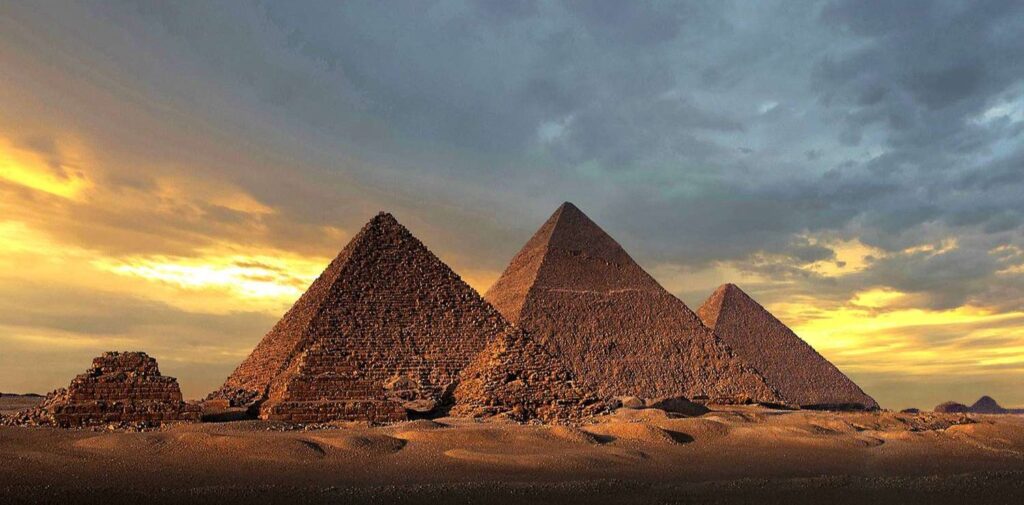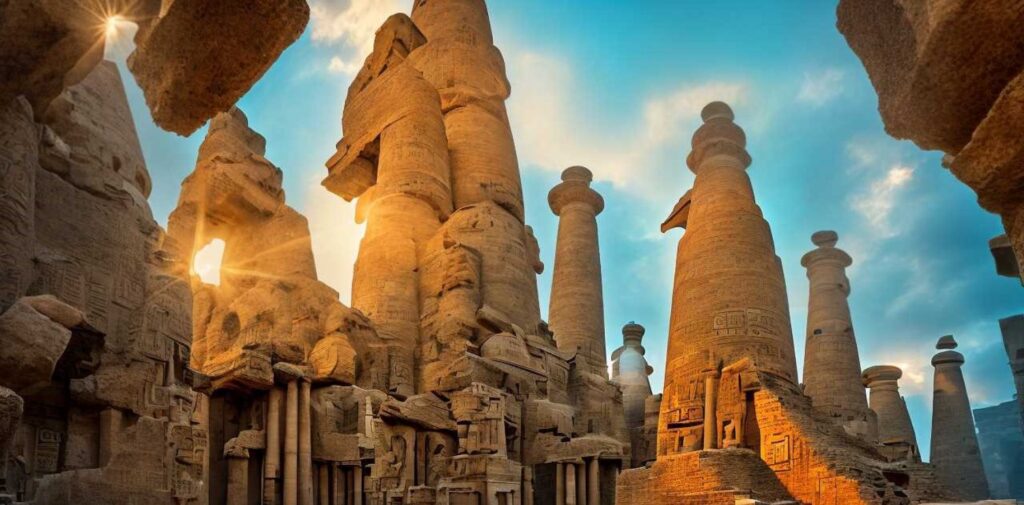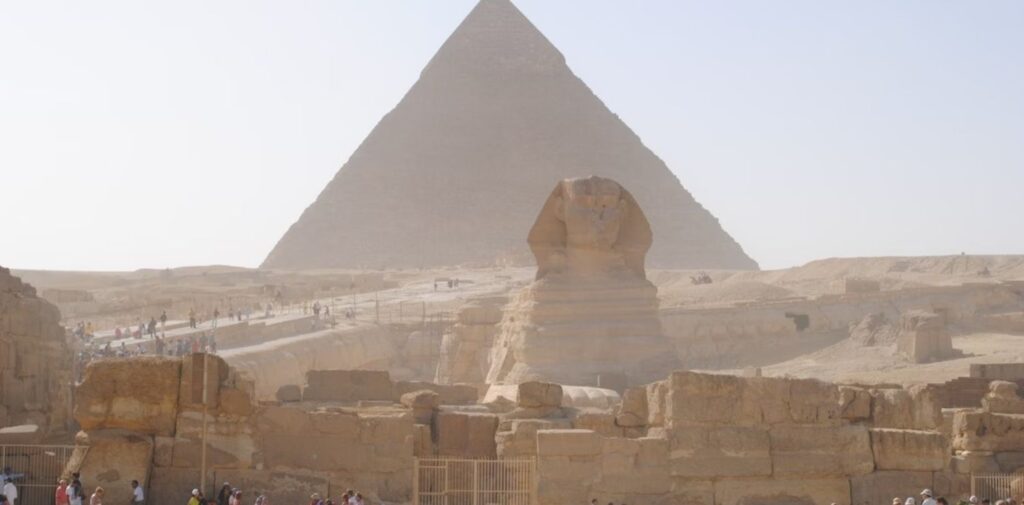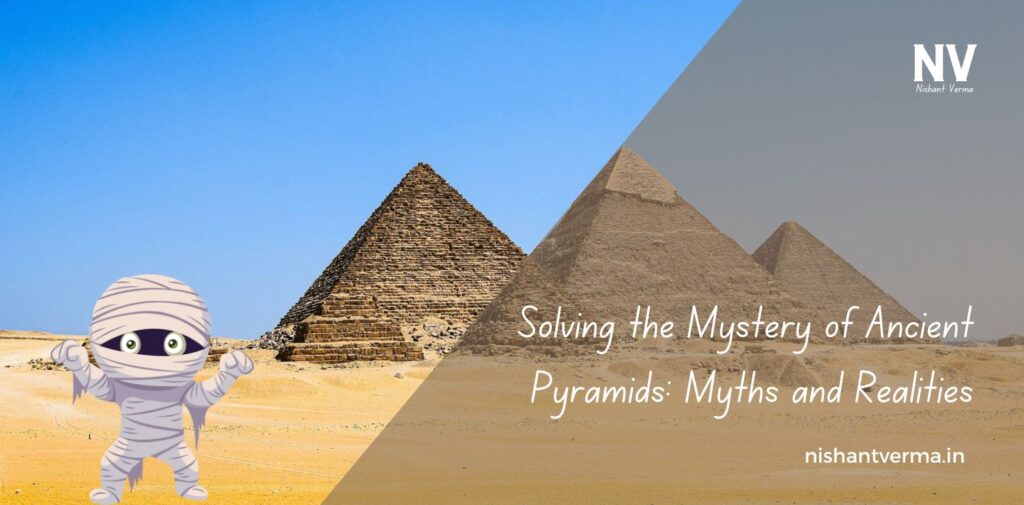The Mystery of Ancient Pyramids have captivated our imagination for centuries. Towering structures, steeped in history and mystery, they tell tales of a long-lost civilization. The most famous pyramids are found in Egypt, but did you know that similar structures exist in other parts of the world, including India? In this article, we will explore how these incredible monuments were built, separate fact from fiction, and delve into their connections to ancient Hindu temples.
Mystery of Ancient Pyramids: A Brief Overview
The pyramids, especially the ones in Egypt, are among the most iconic structures in the world. The Great Pyramid of Giza, built around 2580–2560 BCE, stands as a testament to human ingenuity. It was originally built as a tomb for the Pharaoh Khufu and was the tallest man-made structure for over 3,800 years.
However, there are pyramids in other countries, including Mexico, Sudan, and even India. These structures may vary in size and shape, but they share a common purpose: to honor the dead and serve as monumental tombs.

How Were the Pyramids Built?
One of the most enduring mysteries surrounding the pyramids is how they were constructed. Many myths have arisen over time, suggesting that aliens or advanced technologies were involved. However, historians and archaeologists believe the truth is far more fascinating and grounded in human capability.
- The Workforce: Contrary to popular belief, the pyramids were not built by slaves. Evidence suggests that a skilled labor force, composed of thousands of workers, was responsible for their construction. These workers were likely farmers who, during the Nile’s flood season, had time off from their agricultural duties. They received food, shelter, and wages, making it a community effort rather than a task forced upon slaves.
- The Tools: Ancient Egyptians used simple tools made from copper and stone. They had chisels, hammers, and wooden sleds to transport heavy blocks of limestone and granite. Discoveries indicate they may have even used a system of ramps to move these massive stones into place. These ramps could have been straight or circular, allowing workers to transport stones to the higher levels of the pyramid.
- The Organization: Building a pyramid requires meticulous planning and organization. Workers were divided into teams, each with specific tasks. The project was overseen by skilled architects and engineers who ensured that everything was built according to precise measurements. The layout was often aligned with the stars and cardinal points, showing a deep understanding of astronomy.
- The Materials: The primary material used in pyramid construction was limestone, quarried locally. Higher-quality granite was transported from farther away. This required careful planning, as the transportation of such heavy materials involved innovative solutions. Some theories suggest that the Egyptians may have created waterways to transport stones along the Nile.
Myths About Pyramid Construction
While the reality of how the pyramids were built is fascinating, many myths have arisen over the years:
- Alien Involvement: One of the most popular myths is that aliens helped construct the pyramids. This idea gained traction in the 20th century but lacks any credible evidence. The skills, tools, and organization of the ancient Egyptians were more than sufficient to accomplish this monumental task.
- Slave Labor: Another common belief is that the pyramids were built by slaves. However, archaeological findings, including workers’ cemeteries, suggest that those who built the pyramids were honored laborers. They received care and were buried with respect, which contradicts the notion of them being mere slaves.
- Advanced Technology: Many people think that the ancient Egyptians had access to advanced technology that has since been lost. In reality, they had remarkable knowledge of engineering, mathematics, and astronomy, which they utilized effectively in their construction methods.

The Pyramids and Hindu Temples
Interestingly, the concept of pyramid-like structures is not limited to Egypt. In India, ancient Hindu temples also feature pyramid-like designs, albeit with a different purpose and style.
- The Step Pyramid in India: One of the most notable pyramid-like structures in India is the step pyramid, or “ziggurat,” found in places like Gujarat. These structures were used as temples, often dedicated to various deities. They were built in layers, much like the Egyptian pyramids, but served as places of worship rather than tombs.
- Symbolism: Both Egyptian pyramids and Hindu temples share symbolic meanings. The pyramid shape is often associated with the journey to the afterlife and spiritual ascension in Egyptian culture. In Hinduism, the temple’s design symbolizes the connection between the earthly and divine realms, creating a sacred space for worship.
- Architectural Techniques: The construction techniques used in Hindu temples also showcase remarkable skills. Temples were often adorned with intricate carvings and sculptures that told stories from mythology. Builders used local stones, and like the Egyptians, they relied on a skilled workforce to complete their projects.

The Legacy of the Pyramids
The pyramids, whether in Egypt or India, leave behind a legacy that continues to inspire awe. They remind us of human ingenuity and the desire to honor the dead and the divine. Today, they attract millions of visitors and serve as important archaeological sites, providing insights into ancient civilizations.
- Tourism and Preservation: In modern times, the pyramids are significant tourist attractions, contributing to local economies. Efforts are ongoing to preserve these ancient structures, as they are vulnerable to natural erosion and human impact.
- Cultural Impact: The pyramids have also influenced art, literature, and popular culture. Movies, books, and documentaries often reference these magnificent structures, helping to keep the stories of ancient civilizations alive.
Conclusion: Embracing Mystery of Ancient Pyramids
The ancient pyramids are a testament to human creativity, collaboration, and dedication. While many myths have arisen over time, the reality of their construction is grounded in the skills and knowledge of ancient peoples. As we continue to uncover the secrets of the pyramids, we must also appreciate the rich cultural heritage they represent.
Whether you’re captivated by the Egyptian pyramids or intrigued by the pyramid-like temples of India, these structures offer a glimpse into the past. They invite us to explore the mysteries of ancient civilizations and remind us of the remarkable accomplishments of humanity. So, the next time you gaze upon a pyramid, remember the incredible stories it holds—stories of a time when humans reached for the skies, creating wonders that still stand tall today.




